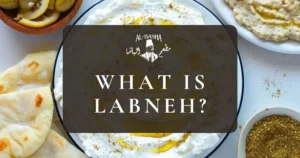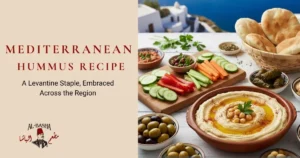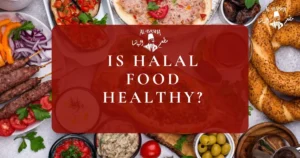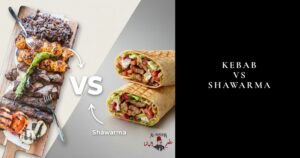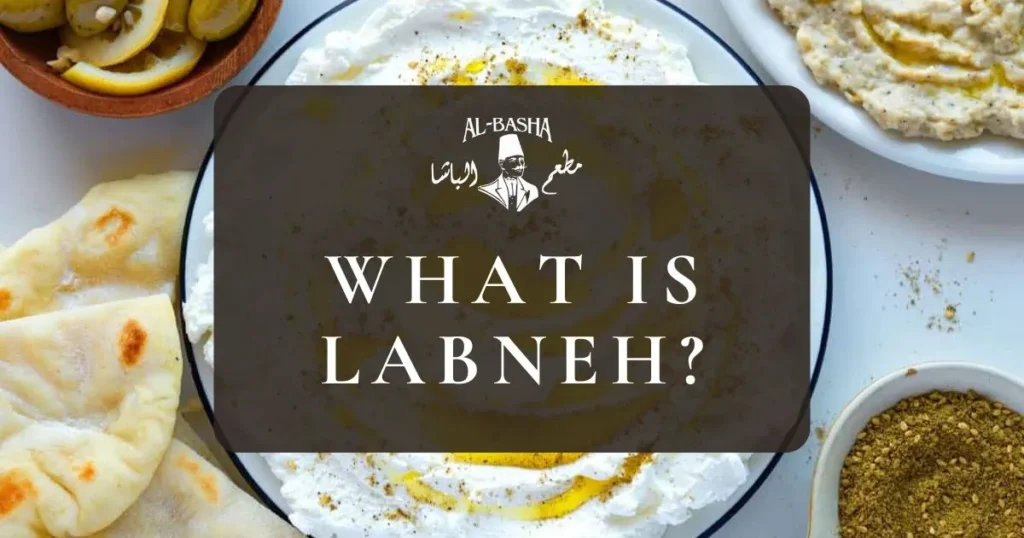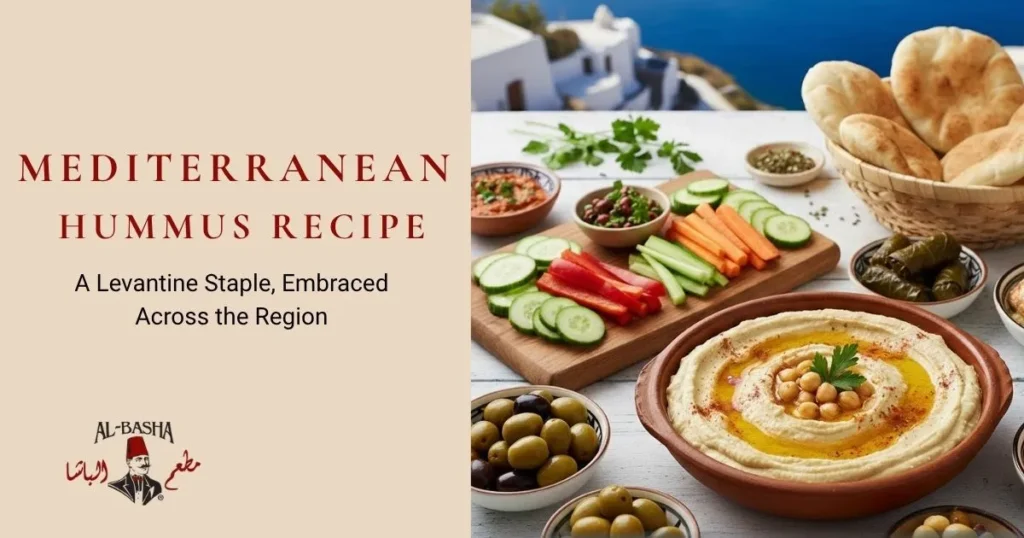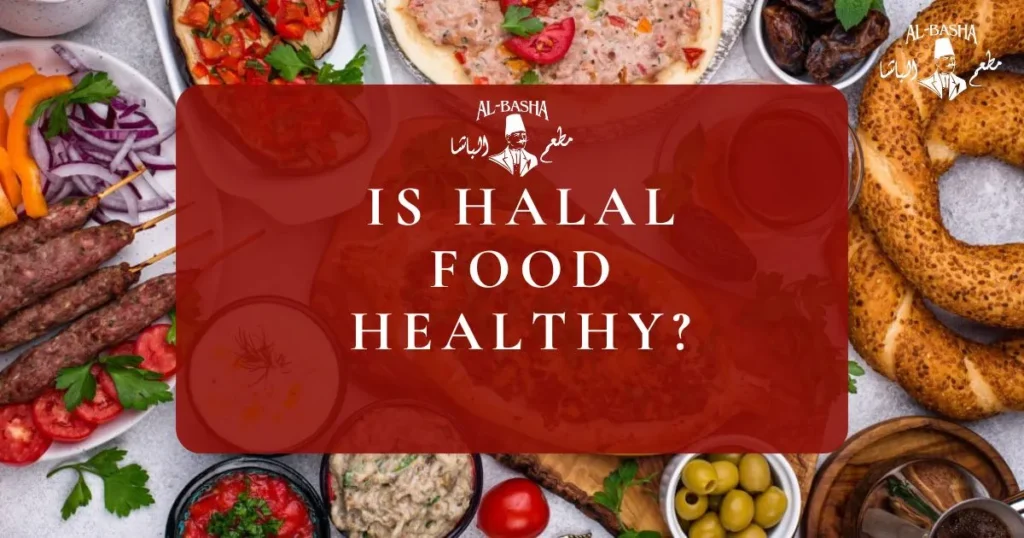Palestinian food is a regional cuisine that originated from the Levantine areas through centuries of cultural exchange. Its main focus is seasonal vegetables, olive oil, legumes, fresh herbs, and simple slow cooking techniques.
In today’s article, we’ll discuss in detail what Palestinian food is, its core ingredients, famous dishes, cooking methods, nutritional benefits, and modern adaptations. We will also understand how it compares to its neighboring cuisines, Israeli and Lebanese.
By the end, you’ll clearly understand that Palestinian food isn’t just about taste; in fact, it’s an important part of culture and health.
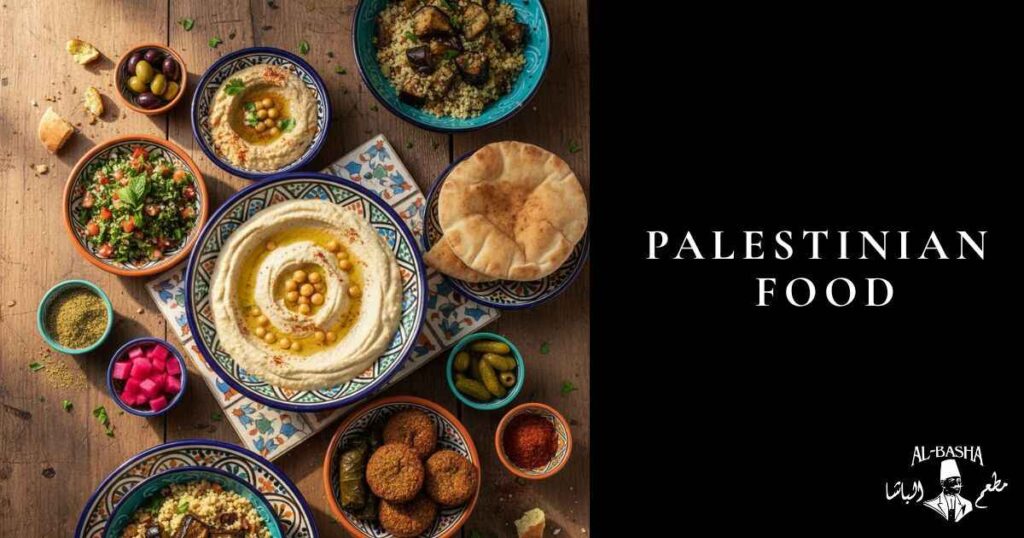
History of Palestinian Food
Palestinian cuisine has its roots in all those factors related to local agriculture (olive groves, wheat fields, and vegetable gardens), old trade routes, and the influence of multiple empires. In these regions, wheat, chickpeas, lentils, olive oil, and citrus fruits have been cultivated for years.
Ottoman rule and Arab trade networks introduced new ingredients such as rice, preserved spices, and new ways of cooking and baking. These new cooking methods, when blended with local cooking practices, created a unique taste.
Communal eating and hosting guests with courtesy are central values of Palestinian food culture. Eating together in family gatherings, festivals, and weddings strengthens social bonds.
In short, every meal is a source of transferring culinary knowledge and regional identity from one generation to the next.
Core Ingredients of Palestinian Food
Ingredients are the core of Palestinian dishes; every dish’s taste is derived from its natural components.
Some basic and important components of Palestinian food are:
- Olive oil (extra virgin): Used in liberal amounts for dressing, roasting, and dipping. It’s the most important fat source in the region and gives that special mouthfeel and aroma.
- Legumes: Chickpeas and fava beans (broad beans) are the basic ingredients of hummus, falafel, ful (stewed fava), and different stews and salads.
- Wheat and Flatbreads: Taboon, flatbreads, pita, and rice are a part of every meal.
- Herbs and Spices: Parsley, mint, za’atar (thyme + sumac + sesame), sumac, allspice, and mild warm spices such as cinnamon and nutmeg create a balanced taste.
- Vegetables: Eggplant, tomatoes, carrots, cucumbers, and preserved lemon are usually used in roasted or stewed form for a deeper taste.
- Dairy and Nuts: Labneh, yogurt, pine nuts, and almonds are added for texture and richness.
All these ingredients together create a mouthwatering flavor profile where lemon and sumac’s tangy taste, the freshness of parsley and mint, and olive oil’s richness are seen together in every bite!
Best Palestinian Dishes (What to Try First)
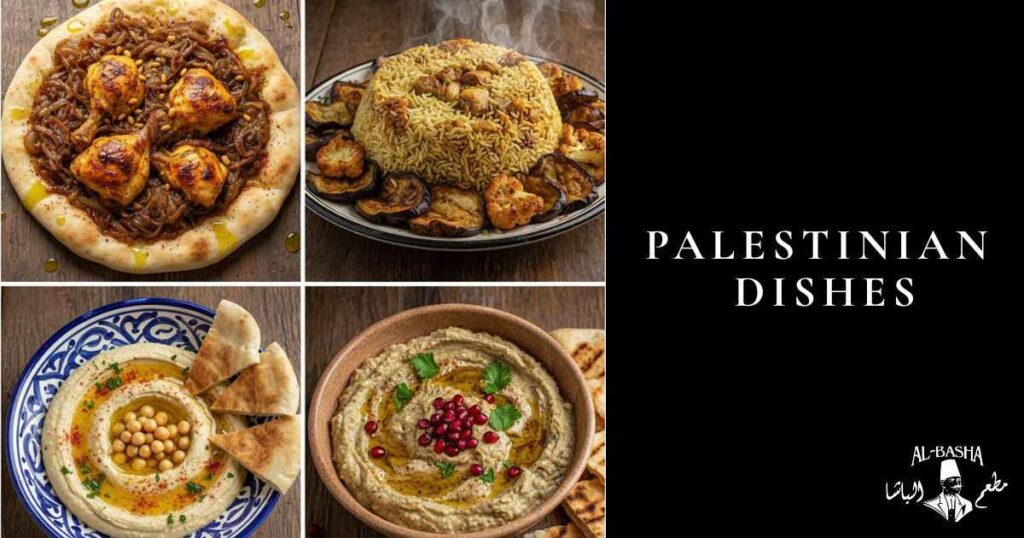
Here are 6 canonical dishes (the dishes that represent the most specific and definitive cuisines of that culture):
- Musakhan: Roasted or braised chicken prepared with caramelized onions and sumac. Served with taboon bread and topped with olive oil and pine nuts.
- Maqluba: It literally means “opposite” or “upside down.” It’s a layered casserole of rice, veggies, and meat cooked together and flipped onto a platter. The result is a dramatic savory cake in which each layer gives its own taste, combining veggies, rice, and meat.
- Hummus: Mashed chickpeas with tahini and lemon, famous across the globe. But the special thing about authentic Palestinian hummus is its high-quality olive oil and balanced acidity.
- Mutabbal: A creamy dip of roasted eggplant, similar to baba ganoush. It gives a smoky, creamy angle to the food.
- Falafel and Tabbouleh: Falafels are crispy, fried chickpea patties served with tabbouleh, a parsley and bulgur-based salad with lemon dressing. This dish represents the vegetarian strength of Palestinian street food.
- Warak Enab (Stuffed Grape Leaves): Rice, herbs, and sometimes meat are wrapped in grape leaves and slowly cooked in lemon broth.
- Maftoul, Musabbaha, and Sayadieh: Maftoul is Palestinian couscous. Musabbaha is a chunky hummus variant, and Sayadieh, a dish of fish and rice, reflects the taste and ingredients of both coastal and inland regions.
Cooking Methods of Palestinian Food
Usually, Palestinian foods are cooked using the following methods:
| Technique | Explanation |
|---|---|
| Roasting and braising | To bring out the real taste in vegetables and meat. |
| Slow simmering | Used in stews and stuffed dishes, where slow cooking is important for better taste. |
| Grilling | For kebabs and charred flavor (smoky taste with heat). |
| Bread baking | Taboon and flatbreads are often baked in high-heat clay or stone ovens. |
| Preserving | For making and drying pickles, such as preserved lemons, sun-dried tomatoes, etc. |
The purpose of these methods is to let the original taste of the food come out naturally.
Flavor Profile of Palestinian Food
The most important and beautiful aspect of Palestinian food is balance.
“Lemon and sumac add the sour taste, olive oil adds the richness, legumes and grains add earthiness, and spices add that warm aroma.”
Spicy and hot tastes are limited in Palestinian dishes. These cuisines are based on aromatic complexity and textual contrast, such as crispy falafel, creamy hummus, and silky maftoul.
Regional Variations and Influence
In the history of Palestinian food, coastal and inland foods are different.
- In coastal regions, fish dishes such as Sayadieh are more popular, whereas in inland areas, chicken, rice, and meat dishes are more common.
- The cuisines of Lebanon, Syria, and Jordan also impact Palestinian food culture. Dishes are somewhat similar with differences in spices, style, and serving.
The Palestinian diaspora has made these dishes spread across the world. Abroad, restaurant chefs and home cooks have added their own local twists to each dish, retaining the authentic taste.
Palestinian Food vs Neighboring Cuisines
Many people confuse Palestinian food with Lebanese or Israeli food. Here is a quick comparison:
- Palestinian vs. Lebanese: Both share olive oil, za’atar, and hummus. Palestinian dishes are more rustic and communal, such as Taboon bread, Musakhan, and Maqluba. Lebanese cuisine focuses more on urban and mezze varieties, such as Kibbeh, Batata Harra, Labneh, Falafel, Fattoush, etc.
- Palestinian vs. Israeli: Israeli cuisine is a modern fusion of many immigrant cultures, combining Middle Eastern ingredients, European techniques, and Mediterranean procedures. For example, dishes like Hummus and Falafel are found both in Israeli and Palestinian cuisines, but there are differences in names and recipes. Palestinian cuisine is deeply rooted in agricultural cycles and family tradition, whereas Israeli cuisine has more fusion trends.
Read here about Greek vs Mediterranean Food.
These differences are complex and culturally sensitive because people and their food had overlapped before national boundaries were created. And even today, due to immigration, food trends continue to evolve.

Health and Nutrition of Palestinian Food
Palestinian food has many health benefits:
- Legumes and Chickpeas: Chickpeas and legumes are a basic element of many Palestinian dishes, such as hummus, falafel, and stews. These are rich sources of fiber, plant proteins, and minerals. According to Healthline:
“Legumes help in reducing cholesterol, decreasing blood sugar levels, and increasing healthy gut bacteria.” Another study confirms that:
“Legumes improve blood pressure, lower the risk of heart disease, and promote weight loss.” - Olive Oil and the Mediterranean Pattern: Olive oil, especially extra virgin (EVOO), is the cornerstone of Palestinian cooking. Research confirms that:
“Olive oil reduces cholesterol, decreases inflammation, and improves heart health.” Palestinian food also has a healthy lipid profile because it’s based on monounsaturated fats only. - Whole Foods and Plant-Forward Balance: Palestinian foods are rich in veggies, legumes, and herbs, with less meat. It’s clearly a “plant-forward” diet, reducing the risk of chronic diseases. Research supports that:
“This plant-based pattern of the Mediterranean diet supports metabolism and inflammatory health.”
Nutritional Value
- Protein: Both legumes and lean meat are rich sources of protein.
- Fats: Olive oil is a source of good and healthy fats.
- Sodium & Portions: Like every cuisine, the preparation method and ingredients matter. If the food is fried moderately and consumed with fresh salad or yogurt, the balance remains better and beneficial for health.
Where Can Palestinian Food Be Found?
Palestinian food isn’t limited to Palestine anymore; people have embraced it across the world.
In Europe and America, many Palestinian restaurants serve authentic cuisines with a modern touch.
Soft items such as hummus and falafel attract many people who then try the traditional dishes like Maqluba and Musakhan (because the taste is truly irresistible).
New chefs are creating vegan and vegetarian versions of Palestinian foods with contemporary twists, bringing Palestinian cuisines to global fine dining.
These cuisines aren’t just about taste; they’re living evidence of culture and heritage.
Practical Tips for Eating Palestinian Food (What to Order)
If you’re eating Palestinian food for the first time:
- Start with mezze: Hummus, Mutabbal, Labneh, and Tabbouleh give a broad taste experience.
- Try a signature main: Musakhan (chicken on taboon), Maqluba (flipped rice dish), and Maftoul (Palestinian couscous).
- Balance: With rice dishes, try adding salad or pickles for balance.
- Ask about bread: Fresh Taboon or Laffa bread makes every meal more fulfilling.
Try Al-Basha, if you are living in Paterson,NJ.
Sustainability and Seasonality
Palestinian food is naturally sustainable because it depends on seasonal and local ingredients. Olive and legumes are both drought-adapted crops. Also, the use of plant-based elements reduces reliance on animal products.
FAQs
Is Israeli food Palestinian?
Many dishes such as hummus, falafel, and maqluba are found in Israeli cuisine, but their origin is Palestinian. The truth is, Israeli cuisine has adopted these Palestinian traditional dishes.
Is Palestinian food Mediterranean?
Palestinian cuisine is part of Mediterranean food. It extensively uses vegetables, olive oil, legumes, grains, and fresh herbs, all of which are mandatory elements of the Mediterranean diet.
Is Palestinian food spicy?
Palestinian food isn’t spicy at all. In fact, due to the use of herbs and olive oil, it has a mild, rich, balanced taste and beautiful aroma.
Where can I order Palestinian food online for delivery in NJ?
You can order Palestinian cuisine in New Jersey at Al-Basha, which serves kebabs, falafel, hummus, musakhan, maqluba, and much more. You can directly order online by visiting our website for delivery across NJ.
What are some traditional Palestinian breakfast foods?
Traditional Palestinian breakfast foods include hummus, falafel, labneh, zairoon, fresh tomatoes, cucumbers, taboon bread, and roti. Many Palestinian families enjoy foul (boiled fava beans) garnished with cumin and olive oil.
Where to Taste Authentic Palestinian Food in Peterson, New Jersey?
Palestinian cuisine is a mix of tradition, family rituals, and regional landscape. Its main elements, legumes, olive oil, fresh herbs, and communal platters, make it both healthy and delicious.
If you’re in New Jersey and want to experience authentic Palestinian taste, visit Al-Basha, known for its classical methods and dishes such as hummus, falafel, musakhan, and freshly made taboon bread. Explore the menu and enjoy the true flavors of Palestine!
Want to know why more people in New Jersey are choosing Halal meals for better health? See our detailed guide on whether halal food is truly healthy.

